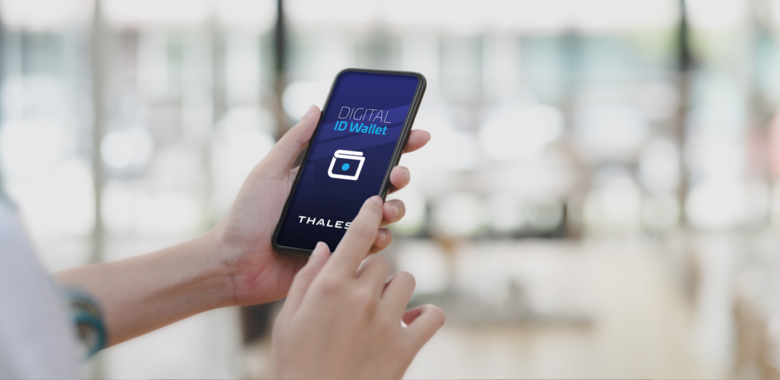Digital transformation is re-shaping industries, transforming businesses and operational models at a pace never before seen. This wave of change is increasingly placing users at the centre of digital innovation – for this reason it’s important that secure identity verification is implemented as part of online service providers’ operations.
Furthermore, the COVID-19 pandemic has prompted industries such as travel, hospitality, online gaming and public services to rethink their customer engagement models in favour of implementing a more user-centric online approach. As a large proportion of the world’s population has had to live under strict lockdown restrictions for several months and many businesses have had to shut their physical operations as a result of the pandemic, it is imperative to have remote access to essential services across a range of sectors.
Face-to-face interaction has become particularly challenging. So how do you build strong customer relationships and establish trust when asking them to provide sensitive personal information such as an ID document or biometrics remotely and online, while guaranteeing regulatory compliance?
Identity verification in a remote world
Simply put, identity verification is making sure that the person on the other side of the screen is who they claim to be. It consists of four simple steps:
- The user takes a photo of their official ID, such as a passport or driver’s license
- The service provider verifies that the ID is authentic by checking the consistency and integrity of the data
- The user takes a selfie
- The service provider verifies if the person is alive (versus a photo) and physically present, and that the face matches the document.
Thankfully, numerous technological developments, including facial biometrics, artificial intelligence (AI) and machine learning can help you make customer onboarding quick and secure. Furthermore, when combined, these technologies not only help to verify the user remotely, but also improve the onboarding experience, making it as comprehensive as possible.
How do you ensure customer trust?
When enrolling customers, businesses need to be able to check their credibility without putting them off. Identity verification requires the use of sensitive personal information; therefore, customers need to be re-assured that their data is handled securely including how it is handled, what it is used for, where and how it is stored and whether the individual has any control over it.
So how can organisations make the user trust them with their ID and biometric data, especially in times when ID verification is done remotely?
Companies can now benefit from AI-driven identity verification solutions without compromising customer trust. Here are a few things you need to consider:
- What about identity theft? As many as 1 in 10 people are now victims of identity fraud annually, whereby fraudsters are using sophisticated online tools to get access to people’s data. Therefore, you need to ensure that the solution you’ve put in place is robust enough to protect users against document fraud and identity spoofing.
- How is the user’s data managed? An essential part of ensuring customers’ trust in the ID verification system in place is to be explicitly clear and transparent about the way you use any data collected in the process and how you protect it. Make sure that no personally identifiable information (PII) is stored locally, and that the data is only transient. Data privacy needs to be thought about very seriously when implementing a digital onboarding solution, allowing users to stay in control of what PII is shared with companies.
- What about cybersecurity? Since 2018, data breaches have exposed more than 38 billion records. Implementing best security practices is mandatory/pre-requisite to guarantee that the service is not vulnerable to any attacks or data breaches.
- Does the service meet regulatory requirements? Businesses need to set up appropriate secure remote identity verification solutions, as it may be risky in the current climate when Know Your Customer (KYC) / Anti-Money Laundering (AML) compliance procedures are so stringent, and threats posed by fraudsters are as broad as they are serious. Following the GDPR and whatever regulation that applies is not just key, but unavoidable.
How to boost customer acquisition remotely without compromising trust
Now that trust is established, how do you get more customers to use your service, in order to increase conversions without impeding the user experience?
Any obstructions to the end-to-end journey can force the user to start the process again, which can be incredibly frustrating and can cause the user to leave. Therefore, ID verification needs to be built with consumer behaviour at its heart and with privacy as a cornerstone of the process.
The front-end application must be user-friendly and as straightforward as possible. For example, advanced ID verification models use passive liveness detection based on machine learning models, and the user is asked for nothing more than to take a selfie.
Today’s expectation is a seamless service delivered immediately. Would you then prefer a real time, automated solution, or one that involves agent intervention in the onboarding process, at the expense of the customer simply giving up?
Customers will be more likely to use the service thanks to the convenience it provides. The service provided needs to add value to the customer, otherwise, they wouldn’t hesitate to go elsewhere. For example, a seamless end-to-end traveller journey is possible by implementing a remote ID verification programme, without compromising customer security. This will allow passengers to check-in for a flight from home and avoid long queues at passport control or when boarding the plane.
Communicating the new service benefits of a highly verified and proven level of security and trust to customers, as well as making it clear that it complies with privacy legislation, is key to improving digital adoption in our touchless journey.



